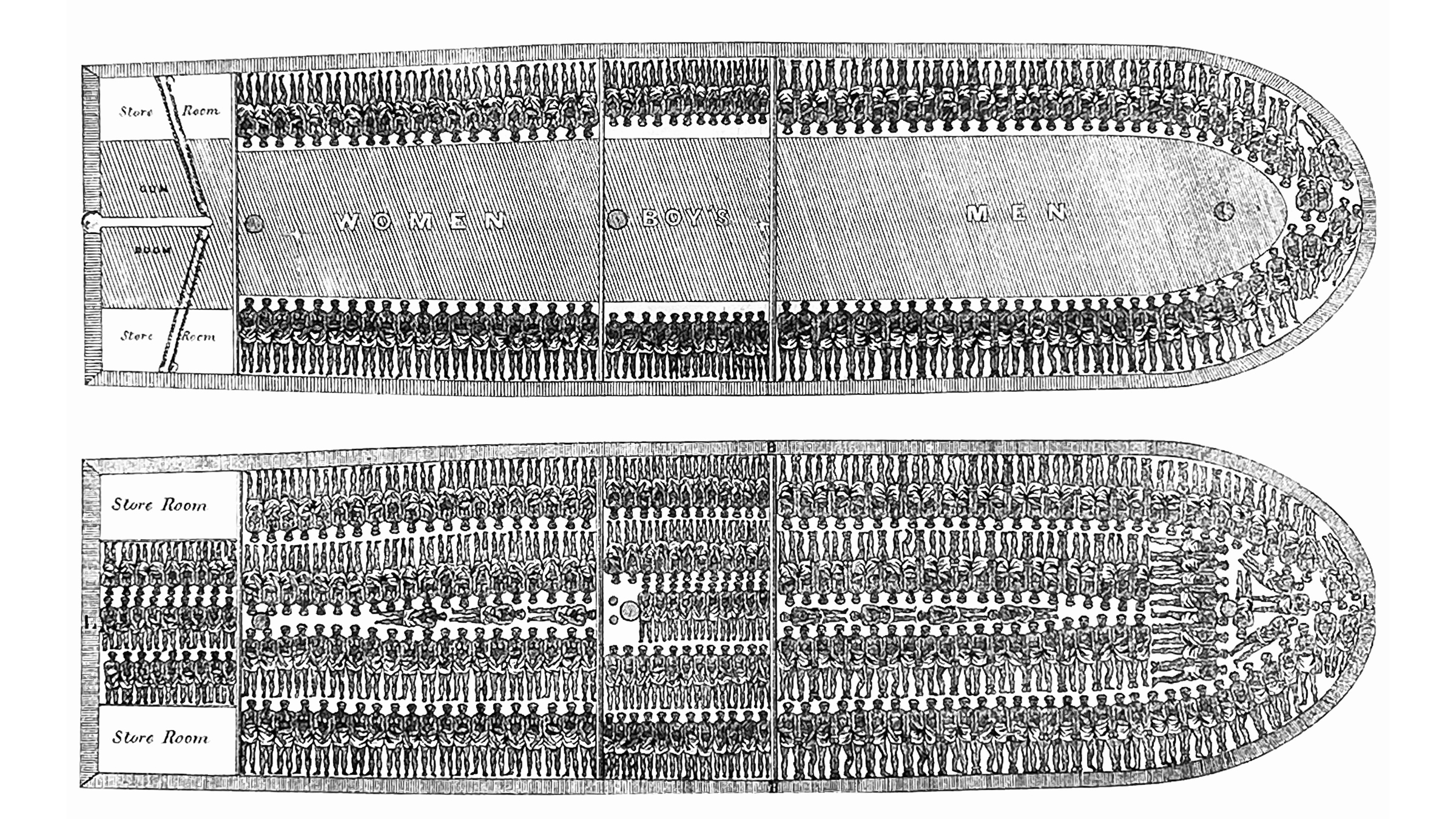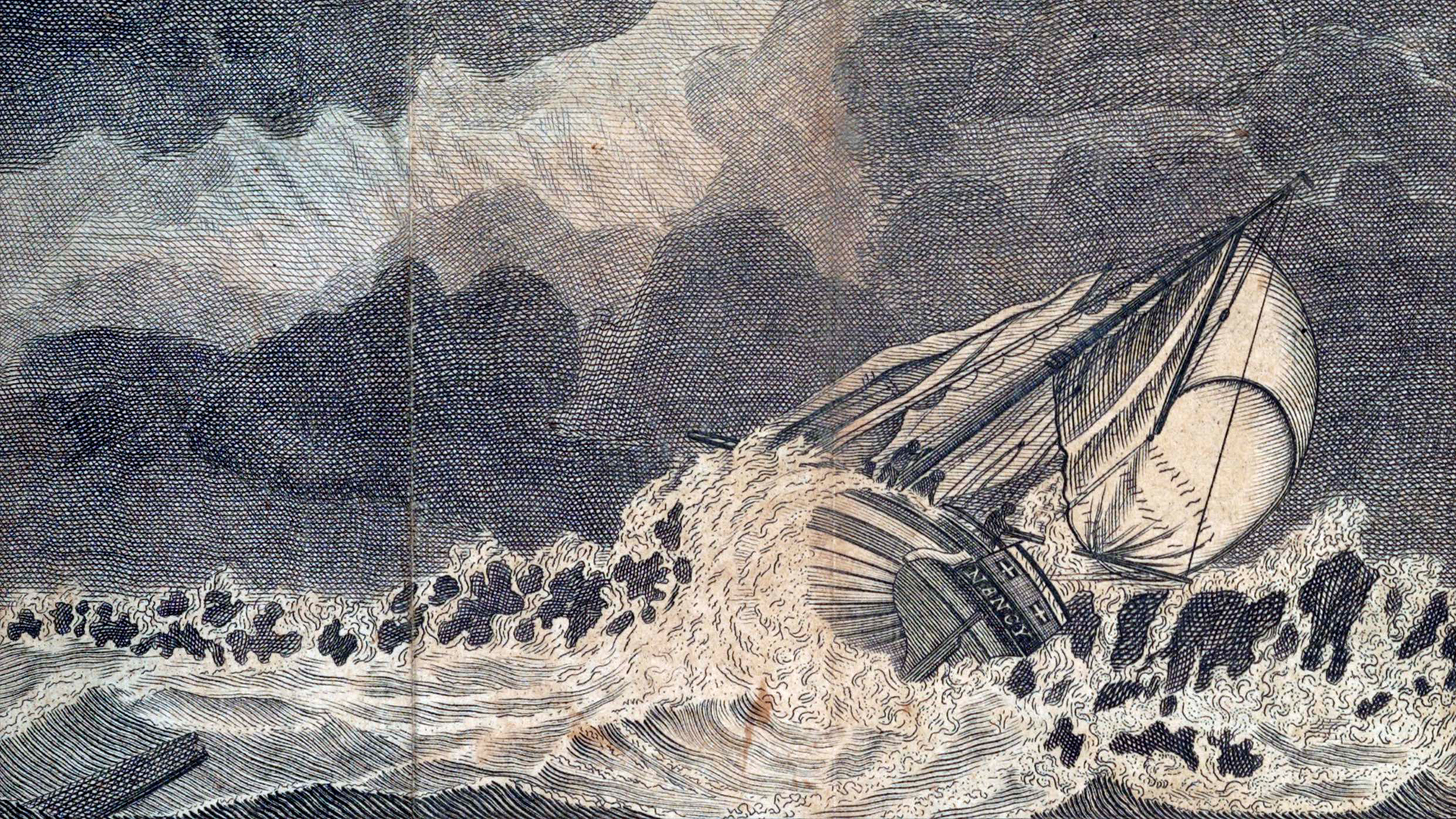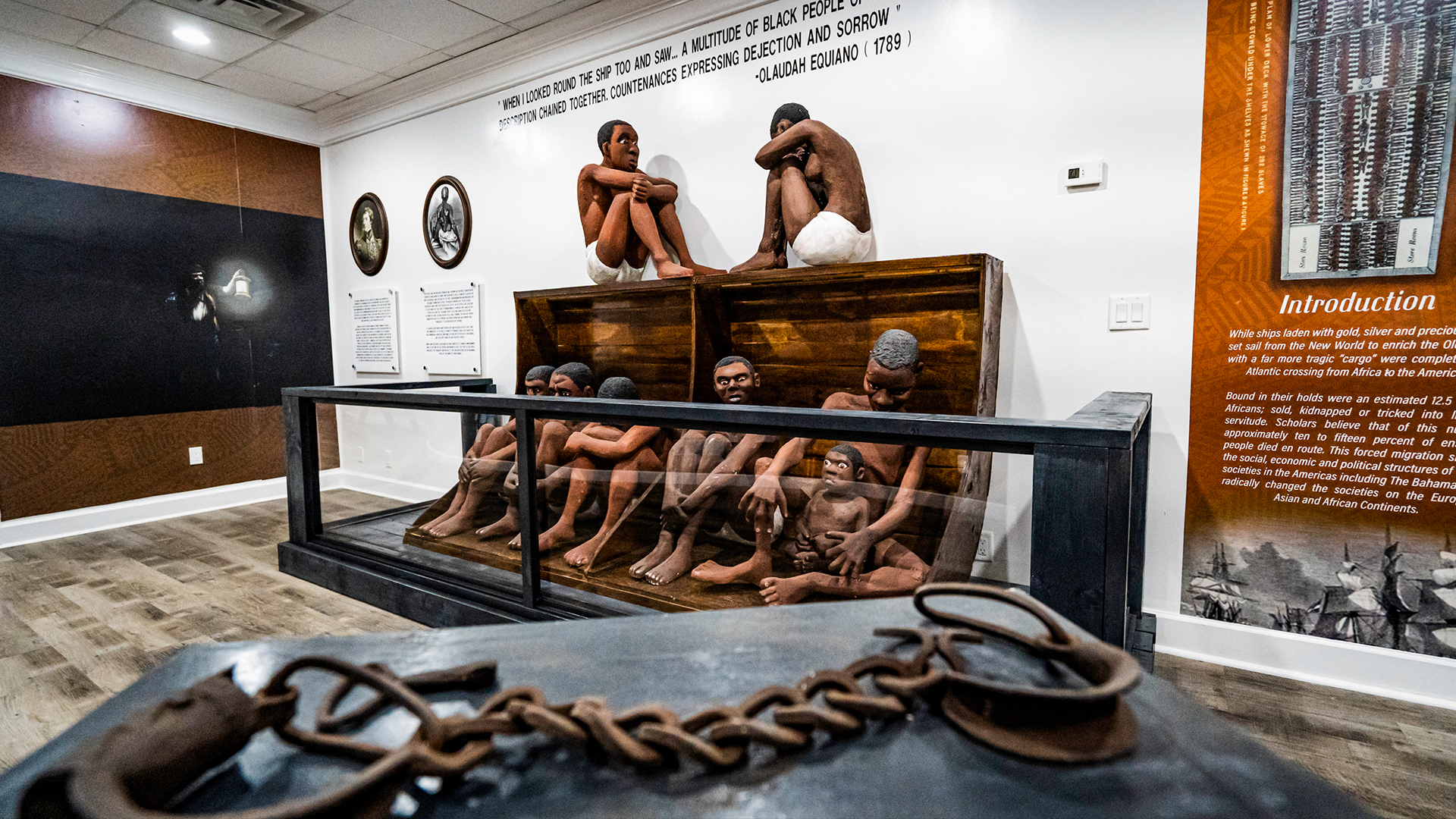14 wrecks that expose 'what life was like on slaver ships' identified in the Bahamas
Researchers say they hope to recover what's left of the ships after more than 200 years underwater.

Archaeologists in the Bahamas have identified the underwater wrecks of 14 sailing ships involved in the trans-Atlantic slave trade between Africa and the Americas, a new report finds.
The wrecks include the Peter Mowell, an American schooner that sank off Lynyard Cay near Great Abaco Island in 1860 with about 400 enslaved Africans on board; as well as smaller vessels that carried slaves to plantations for sugar, coffee, cotton and tobacco in North America and around the Caribbean.
Most of the wreck sites have been identified only from 18th- and 19th-century records and remain unexplored, but the locations of some of them have already been found.
The team has physically located three of the wrecks, but "for now, they are all under wraps," Carl Allen, CEO and founder of the underwater archaeological group Allen Exploration, told Live Science in an email. "These wrecks are not only historically important for investigating what life was like on slaver ships, [which is] poorly understood archaeologically, but they are physical witnesses to the knowledge base behind this horrific trade."
Fatal trade
The slave ships were identified during Allen Exploration's Bahamas Lost Ships Project, which is compiling an inventory of every shipwreck around the islands. So far, the team has identified 596 wrecks in the waters around the northern Abaco islands, and the oldest is from 1657.
The group is working on the project with the Bahamas Maritime Museum in Freeport on Grand Bahama, which published the report on the slave ships in its Ocean Dispatches series to coincide with Black History Month.
Get the world’s most fascinating discoveries delivered straight to your inbox.
Michael Pateman, director of the Bahamas Maritime Museum and co-author of the report, told Live Science that the history of the Bahamas was profoundly influenced by several slaving events. They include the arrival of the first slaving vessels from Africa in 1721, which defined the population of the islands; more than 90% of the people who live there today are of African descent.
The Bahamas were also the scene of the 1841 revolt on the slave ship Creole, which was transporting slaves from Norfolk, Virginia, to New Orleans. But some of the 135 enslaved people on board the ship seized it and forced it to sail to the Bahamas instead, where they claimed their freedom — a major milestone in the history of the trans-Atlantic slave trade, Pateman said.
The wrecks' locations show that the Bahamas served as a major crossroads between Africa, the American Southeast, Cuba and the Gulf of Mexico.
The region is known for its bad weather, but "it was the safest route," James Jenney, director of research for the Bahamas Lost Ships Project and co-author of the report, told Live Science in an email.
Island route
For many of the wrecks in the northern Bahamas, the ships sank when they were heading south from American ports toward the Northeast Providence Channel between Grand Bahama and Andros Island. "If you wanted to get to Havana and Cuba's sprawling plantations, you had to risk these waters," Jenney said.
The sugar plantations in Cuba were an especially dire destination for enslaved Africans.
"Conditions varied, but the fact that Havana was known as the 'banqueting place of death' says it all," underwater archaeologist Sean Kingsley, director of Wreckwatch International and co-author of the report, told Live Science.
He noted that enslaved African workers lived in miserable huts said to be "unfit for the habitation of wild beasts"; they wore iron slave collars and worked seven days a week, with just four hours a day of rest in cane-cutting season. About 10% of enslaved Africans died on the plantations in Cuba each year during the slave trade, and some were flogged to death, he said.
The next steps include diving to some of the wrecks to see what's left, in some cases after more than 200 years since the ships sank.


Report co-author James Sinclair, director of archaeology for Allen Exploration, said many were in shallow, warm waters and "high energy zones" — that is, with a lot of waves and storms — that have negatively impacted the sites.
"Our goal is to record what's left and figure out how to better preserve rare remains," he told Live Science.
Editor's note: Updated at 9:06 p.m. EST on March 4 to include an illustration of a ship carrying enslaved Africans.
Tom Metcalfe is a freelance journalist and regular Live Science contributor who is based in London in the United Kingdom. Tom writes mainly about science, space, archaeology, the Earth and the oceans. He has also written for the BBC, NBC News, National Geographic, Scientific American, Air & Space, and many others.






